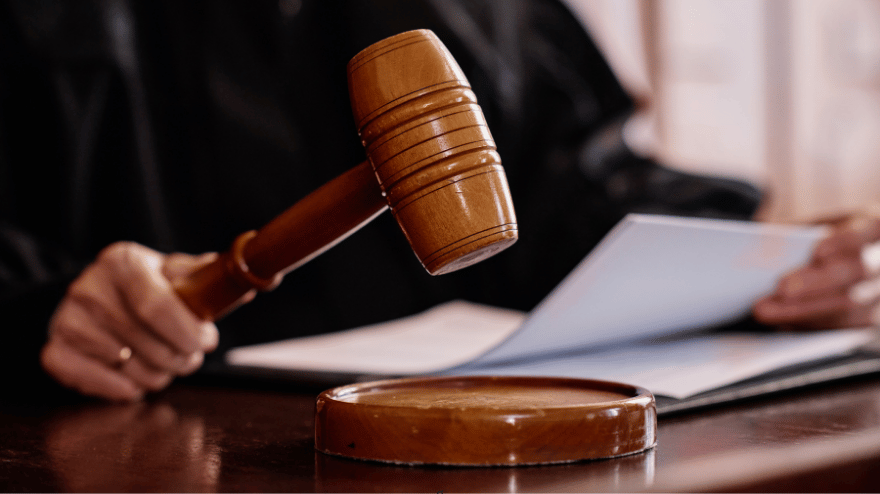What to Expect in a DVRO Hearing in California

Table of Contents
The right legal support can change everything. Take the first step today and connect with an attorney who understands your needs.
What to Expect in a DVRO Hearing in California
Domestic Violence Restraining Orders (DVROs) are serious legal protections designed to help individuals who are experiencing abuse or threats of abuse. If you are involved in a DVRO case, whether as the person seeking protection or the person responding to a request. It’s essential to understand what happens during a hearing, what evidence the court considers, and how to prepare effectively.
At Cage & Miles, our experienced family law attorneys guide clients through every stage of the DVRO process with compassion, preparation, and a focus on ensuring safety and fairness.
Understanding the DVRO Process
A Domestic Violence Restraining Order can protect someone from physical harm, harassment, stalking, or threats from a current or former partner, family member, or cohabitant.
The process typically involves three key stages:
Filing the Request for a DVRO:
The person seeking protection (the petitioner) files court forms describing the abuse or threats. If the judge believes immediate protection is needed, a Temporary Restraining Order (TRO) may be issued until the full hearing.
Serving the Other Party:
The restrained person (the respondent) must be formally served with the DVRO paperwork, ensuring they have the opportunity to prepare for the hearing.
The DVRO Hearing:
Both sides appear before a judge to present their evidence, testimony, and witnesses. The court then decides whether to grant, deny, or modify the restraining order, typically lasting up to five years.
What Happens During the Hearing
A Domestic Violence Restraining Order (DVRO) hearing is often one of the most critical moments in a domestic violence case. It’s the point where both parties present their side of the story, and the judge decides whether a permanent restraining order should be issued. Because the outcome can have long-lasting effects, from custody rights to living arrangements and even employment. Preparation is key.
These hearings typically last anywhere from 20 minutes to several hours, depending on the complexity of the case and the amount of evidence presented. While every court operates slightly differently, most follow a structured format:
1. Opening by the Judge
At the start of the hearing, the judge calls the case and confirms the identities of both parties. The judge reviews the case file, including the initial request for the DVRO, the temporary restraining order (if one was issued), and any responses filed by the opposing party.
They’ll then explain the process and remind both sides of courtroom procedures, such as when to speak, how to introduce exhibits, and the importance of respectful conduct. The judge’s goal is to ensure that both parties have a fair and orderly opportunity to present their cases.
2. Petitioner’s Case
The person requesting the restraining order (the petitioner) presents their side first. This is their opportunity to explain what happened and why they believe continued protection is necessary.
The petitioner’s presentation may include:
- Personal testimony: Describing the incidents of abuse, threats, harassment, or fear of harm.
- Evidence: Photos, videos, text messages, emails, or social media messages documenting the alleged abuse or its aftermath.
- Witnesses: Friends, family members, neighbors, or professionals (such as therapists or police officers) who can testify about what they saw or heard. The judge may ask clarifying questions to better understand the timeline of events, the relationship between the parties, and the impact on the petitioner’s safety or well-being.
3. Respondent’s Case
Once the petitioner finishes, the accused person (the respondent) has the chance to respond. They can:
- Testify on their own behalf and provide their version of events.
- Present their own evidence. For example, communications that contradict the petitioner’s claims or demonstrate that allegations were exaggerated or taken out of context.
- Call witnesses who can speak to their character or provide insight into the events in question. The respondent may also cross-examine the petitioner or their witnesses, though this is usually done carefully to avoid intimidation or harassment. The judge ensures that the process remains focused, respectful, and fair to both sides.
4. Closing Statements
After both parties have presented their evidence, each side may give a short closing statement summarizing their main points. This is the time to remind the judge of key facts, highlight inconsistencies in the opposing party’s testimony, and explain why granting or denying the restraining order serves justice and protects the child or victim’s best interests.
The Judge’s Decision
Once all evidence has been heard, the judge will either announce their decision immediately or take the matter “under submission” to review it further. The ruling may include:
- Granting the DVRO (for up to five years)
- Denying the request
- Modifying specific terms, such as visitation or firearm restrictions
If the restraining order is granted, the judge will specify exactly what is prohibited, including contact, distance, and any child custody or property terms that apply.
Tip: Success at a DVRO hearing often comes down to preparation and presentation. Organize your evidence clearly, stay calm while testifying, and be consistent in your story. Judges value credibility and authenticity just as much as physical proof. Having an experienced family law attorney by your side can help you stay focused and effectively present your case.
“The best way to stay composed in a DVRO hearing is to trust the process. Write a clear, detailed declaration, stick to the facts, and tell your story the way it actually happened — you know it better than anyone. Judges can tell when someone is honest and prepared; truth and organization are always more persuasive than emotion.” - Garen Gevorkian
Types of Evidence Judges Consider
Judges in California take DVRO hearings very seriously. The following forms of evidence can influence the outcome:
- Photos or videos of injuries or property damage
- Police or incident reports
- Medical or therapy records
- Text messages, emails, or voicemails containing threats or harassment
- Witness statements or testimony
- Documentation of past restraining orders or criminal charges
The court’s primary focus is determining whether abuse occurred and whether continued protection is necessary for safety.
“The most persuasive evidence in a DVRO hearing is often direct evidence that corroborates witness testimony. Direct evidence is any evidence that tends to prove a fact without requiring the court to draw inferences or make assumptions. For example, photographs of an injury constitute direct evidence that the injury occurred, and they also serve to corroborate the witness’s account of the incident. This type of corroboration significantly bolsters the witness’s credibility.
Because DVRO hearings frequently involve “he said/she said” scenarios, the court, as the trier of fact, must carefully assess the credibility of each witness. Direct evidence that supports and aligns with a witness’s statements can therefore be particularly powerful in persuading the court to find your client credible.” -Ashley Bell
What Happens After the Hearing
Once the judge issues a ruling, several outcomes are possible:
- DVRO Granted: The restrained person must comply with all orders, which can include staying away from the protected person, moving out of a shared home, and surrendering firearms.
- DVRO Denied: The judge determines there isn’t sufficient evidence to justify continued protection.
- DVRO Modified: The judge may adjust the terms or duration of the order based on new information.
If a DVRO is granted, violating it can result in criminal charges and arrest, so compliance is crucial. Either party may also appeal or request a modification if circumstances change.
Key Takeaways
- A DVRO hearing allows both parties to present their sides before a judge.
- Preparation and credible evidence are essential.
- The outcome can have long-term effects on custody, housing, and reputation.
- Legal representation can make a significant difference in protecting your rights and ensuring a fair process.
Conclusion
Facing a DVRO hearing can feel overwhelming, but you don’t have to go through it alone. The attorneys at Cage & Miles bring deep experience in California family law and domestic violence cases, providing the legal and emotional support you need to prepare effectively and move forward with confidence.
Whether you are seeking protection or defending against allegations, our team is here to ensure your rights are fully represented.
Get matched with the right attorney for your case
Schedule a confidential, no-obligation conversation with our team. We’ll discuss your unique situation and match you with the attorney best suited to help you move forward.





.avif)
.avif)
